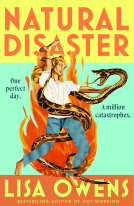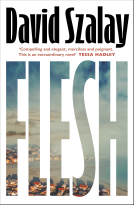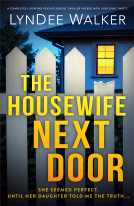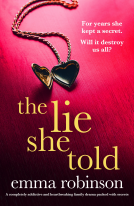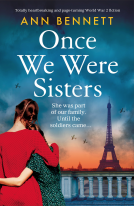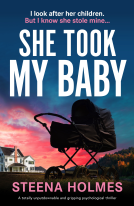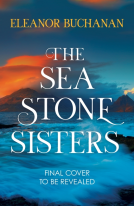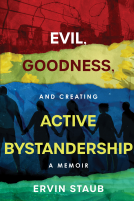
From Underground Railroad to Rebel Refuge
Canada and the Civil War
by Brian Martin
This title was previously available on NetGalley and is now archived.
Send NetGalley books directly to your Kindle or Kindle app
1
To read on a Kindle or Kindle app, please add kindle@netgalley.com as an approved email address to receive files in your Amazon account. Click here for step-by-step instructions.
2
Also find your Kindle email address within your Amazon account, and enter it here.
Pub Date 25 Oct 2022 | Archive Date 1 Jun 2022
Talking about this book? Use #FromUndergroundRailroadtoRebelRefuge #NetGalley. More hashtag tips!
Description
Despite all we know about the Civil War, its causes, battles, characters, issues, impacts, and legacy, few books have explored Canada’s role in the bloody conflict that claimed more than 600,000 lives.
A surprising 20,000 Canadians went south to take up arms on both sides of the conflict, while thousands of enslaved people, draft dodgers, deserters, recruiters, plotters, and spies fled northward to take shelter in the attic that is Canada. Though many escaped slavery and found safety through the Underground Railroad, they were later joined by KKK members wanted for murder. Confederate President Jefferson Davis along with several of his emissaries and generals found refuge on Canadian soil, and many plantation owners moved north of the border.
Award-winning journalist Brian Martin will open eyes in both Canada and the United States to how the two countries and their citizens interacted during the Civil War and the troubled times that surrounded it.
Available Editions
| EDITION | Other Format |
| ISBN | 9781770416383 |
| PRICE | US$19.95 (USD) |
Average rating from 8 members
Featured Reviews
 Lisa C, Reviewer
Lisa C, Reviewer
This book presents a different perspective of the American Civil War, documenting the involvement of Canada in the war and their role in slavery. Great book, highly recommend.
 Me'Shelle D, Reviewer
Me'Shelle D, Reviewer
From Underground Railroad to Rebel Refuge: Canada and the Civil War is such an eye opener. I never new Canadians took part in protecting slaves, fighting the south and like the Notzys took refuge in America, the KKK and confederate took refuge also in Canada. Amazing book. A must read
 Anita S, Librarian
Anita S, Librarian
While books, scholarship, films, documentaries and other media concerning the American Civil War of 1861 to 1865 have no shortage of materials, and have their own dedicated areas of study, one of the underrepresented and lesser-known aspects of this history is that of Canadian involvement.
Canada's image remains that of a beneficent safe haven for escaping enslaved people of African descent from the United States. After 1834, when Britain abolished slavery, Canada followed suit not because it wanted to but because they had no choice as a country of the Commonwealth. Canada's history as part of the Underground Railroad absolutely helped to emancipate some of the most notable figures of the abolitionist movement, including Harriet Tubman to St. Catharine's Ontario, as well as Josiah Henson, who would later go on to become a preacher. However, that is just one part of a far more complex story.
The author, Brian Martin, had to do much of his archival research focused on London, Ontario. 20,000 Canadians took up arms in this conflict. Most shockingly of all, according to the description on the back of the book, "Confederate President Jefferson Davis along with several of his emissaries and generals found refuge on Canadian soil, and many plantation owners moved north of the border."
Martin sets the scene at Woodlawn Cemetery, the final resting place of many people in London, Ontario. Americans are also buried there--some former enslavers and plantation owners born in Charleston, South Carolina. How did such an anomaly happen?
Shadrach T. Martin, formerly of Tennessee arrived in London in 1854, "and became a popular barber." He was the first Black person to enlist on the Union side, and his grave is unmarked. He served before 'colored' regiments were formed.
While Canada has long been thought of as the quaint, boring, and polite neighbour to our louder, brasher American counterparts, a look at headlines from the past 5 years suggests much otherwise. Canada is only now beginning the long overdue process of acknowledging its history of residential schools and the unthinkable conditions that thousands of First Nations children suffered. Those who survived have never fully recovered. The Ottawa truck brigade that terrorized the nation's capital for months at the start of 2022 was not polite in any way, shape, or form. I haven't even gotten to the bills in Quebec that have been and are continuing to cause problems.
People seem to have conveniently forgotten that the same white supremacist ideals, actions, genocide against indigenous First Nations people, spreading of disease, and colonization that took place to form the backbone of the United States are the same in Canada. It shouldn't surprise me that many people, if they realize this, refuse to deal with it in any meaningful way. One thing I do know for sure is that the way it's taught in most schools in Canada is a far cry from the reality of what happened.
Martin goes on to explain that the community of Niagara-on-the-Lake became a home for Confederate generals "and other Southerners who may have been tried for treason and hanged had they remained in the United States." They found their former president, Jefferson Davis, who was "hailed" by the public. Most of these Americans returned to the States after a while, but some stayed like the Manigault family of South Carolina.
It may surprise readers to discover that two leaders of the Klan wanted for murder went to Canada, one of them settling in London, the other in Niagara.
The author also differentiates between the first iteration of the organization readers identify as the KKK, which disappeared around 1871. These were KK, the Ku Klux, no Klan. In 1915, not coincidentally around the time of the release of possibly the most white supremacist fill in history, "The Birth of a Nation," a new Klan was formed. They became the Knights of the Ku Klux Klan, or KKK, or Klan for short.
Martin dutifully goes through each of the American states that abolished slavery by 1798. Vermont (1777), Pennsylvania (1780), Massachusetts (1781), New Hampshire (1783), and Connecticut (1784). Maine, it's important to note, never allowed slavery. "New York's bill to gradually abolish slavery wasn't enacted until 1799 and its provisions were similar to those in Upper Canada."
In Chapter 2, Martin starts the discussion with a Black boy about age five forcibly dragged from his home in Madagascar to New France in the 1620s. David Kirke, the Englishman who purchased this boy, bought him from an Englishman who 'found him' in Madagascar. He was sold again to a French clerk, who then sold him to Couillard, a father of 10 who arranged for a Father Le Jeune to teach him along with an 'adopted' indigenous girl. He was baptized Olivier Le Jeune. Even at such a young age, Olivier understood that he was fundamentally different and an enslaved person because of the colour of his skin. Martin writes that he became the first Black student in Quebec and died in 1654 at age 31. He was believed to have been a free man of colour at the time of his death. However, his occupation was listed as 'domestique' and he was still living with the Couillard family.
The author then discusses other historical factors like the British conquest of New France and the Treaty of Paris which affected the state of slavery in Canada.
There's a false notion that when enslaved people of African descent escaped the plantations where they were bound and made it to non-slaveholding states like Ohio, that the whites there welcomed and accepted them. This is a complete falsehood for the most part, as historical records demonstrate that Cincinnati in particular was very hostile to Black people and violence increased between 1815 and 1829. The whites who lived in this area and other parts of Ohio feared the the formerly enslaved were here to 'steal their jobs' and homes, or that because of their proximity to find shelter near certain businesses, that it would reduce sales. Threats of mob violence were too present.
Readers will also get to read about Henson, previously mentioned in the part discussing Harriet Beecher Stowe. Next up, the book discusses Harriet Tubman and the circumstances of this key figure in the abolitionist movement while also discussing the conditions that Black people in Canada West would have faced (modern-day provinces like Alberta and British Columbia).
Going into the origins of how South Carolina was the first to secede from the Union, Martin discusses political figures of the day including Seward and Lincoln.
Slowly but surely, Martin reveals in bits how it was that Canadians entered the Civil War and factors like how those with Irish heritage disliked the English, so they were more amenable to deserting British ranks.
Civil War buffs as well as Canadian History buffs of the time period that this covers will enjoy the thoroughness of this compelling volume, which I highly recommend for purchase in academic as well as public libraries. Further, anyone who wants to know about the earliest establishments of communities in parts of Ontario in the Reconstruction Era as well as before, would do well to pick up a copy of this volume. For film history buffs or those who study mass media images of race, the discussion of "The Birth of a Nation" is also something that will interest you.
I hope that Canadian publishers in particular, both independent and those who are the Canadian arm of the Big 4, will publish more titles about Canada's involvement in the Civil War, because it's an area that needs more scholarship and scholarly sources to be available.
Readers who liked this book also liked:
Antony Johnston
General Fiction (Adult), Mystery & Thrillers, New Adult
Ervin Staub
Biographies & Memoirs, History, Nonfiction (Adult)



